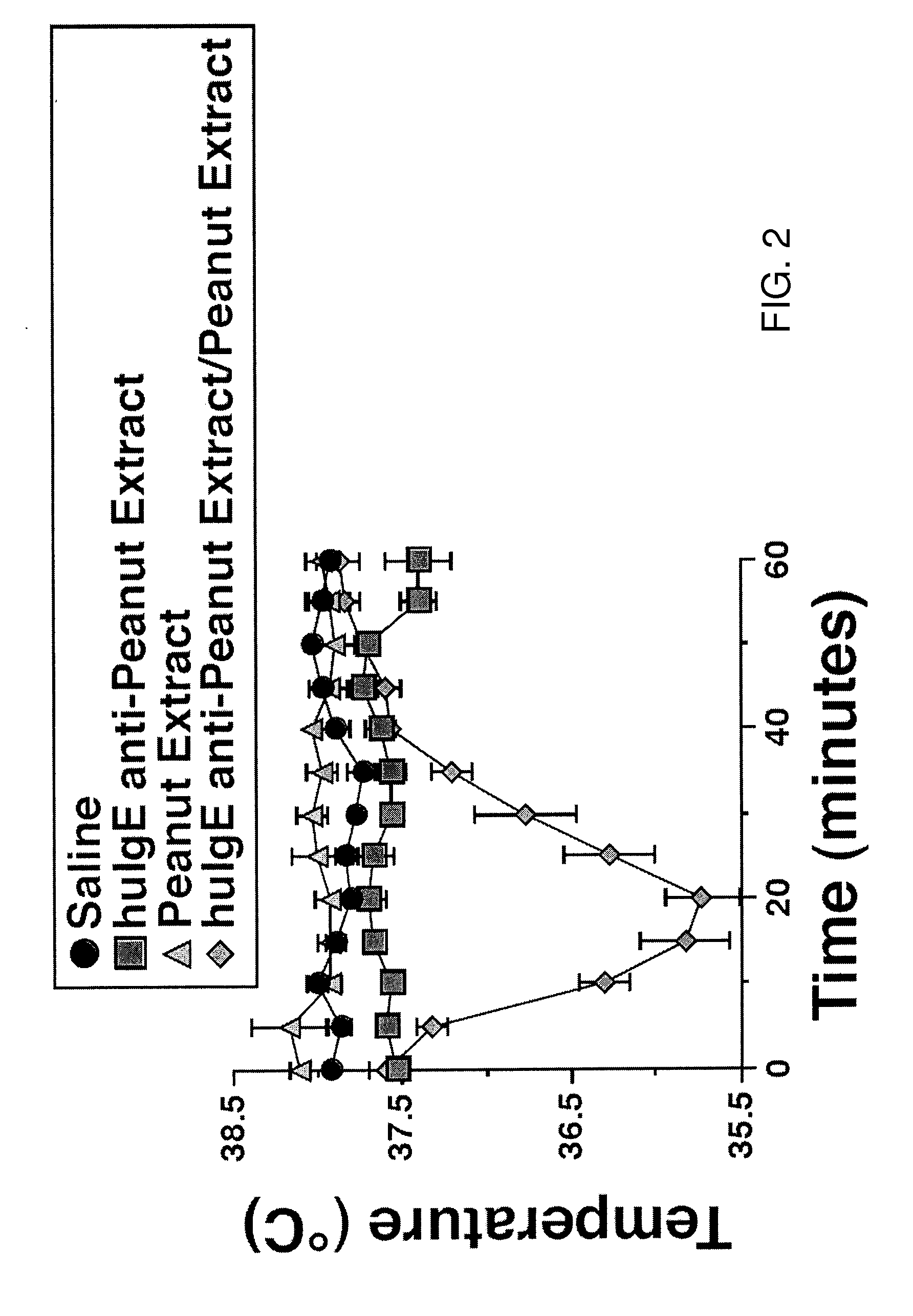Methods for suppressing allergic reactions
a technology of igg and allergic reaction, applied in the field can solve the problems of short time period, inability to establish precise mechanisms, and the loss of suppressive effects of rapid desensitization, etc., and achieve the effect of suppressing allergic reaction and suppressing allergic reaction
- Summary
- Abstract
- Description
- Claims
- Application Information
AI Technical Summary
Benefits of technology
Problems solved by technology
Method used
Image
Examples
example 1
Materials and Methods of Studies Described Herein
[0151]Mice
[0152]Female BALB / c and C57BL / 6 mice were purchased from Taconic (Hudson, N.Y.) and were used at 7-12 wk of age. FVB / N wild-type mice (purchased from Jackson Labs, Bar Harbor, Me.) and IgE-deficient mice on an FVB / N (a gift from Hans Oettgen and Philip Leder, Harvard, Cambridge, Mass.) were bred in our colony. BALB / c background FcεRIα-deficient mice (a gift of Jean-Pierre Kinet, Harvard) were bred in our colony. IL-4 transgenic mice on a BALB / c background (a gift of Robert Tepper, Harvard) were bred in our colony and backcrossed >6 generations to C57BL / 6 mice.
[0153]Antibodies
[0154]Monoclonal antibodies or the hybridomas that produce them were obtained from the following sources: 2.4G2 (rat IgG2b anti-mouse FcγRII / RIII mAb (ATCC, Rockville, Md.)), EM-95 (rat IgG2a antimouse IgE (Zelig Eshhar, Weizmann Instititue, Rehovot, Israel)), MAR-1 (hamster antimouse FcεRIα mAb (eBioscience, San Diego, Calif.)), 5B11 (rat IgG2a anti-mou...
example 2
Saturation of FcεRI with IgE and Anaphylaxis
[0167]FIG. 1 shows in vivo saturation of FcεRI with IgE suppresses the anaphylactic response to MAR-1. More specifically, FIG. 1 shows that anaphylaxis induction by MAR-1 (hamster anti-mouse FcεRI can be prevented by pretreating mice with IgE. The IgE binds to FcεRI without crosslinking it and prevents the binding of MAR-1 to the receptor. As a result, MAR-1 only binds to receptor that is newly synthesized and inserted into the mast cell membrane. This happens too slowly to cause anaphylaxis and should result in desensitization over a period of a few weeks, as MAR-1 slowly replaces IgE on the mast cell and removes FcεRI from the cell surface. Pretreating mice with a univalent Fab of Fv fragment of MAR-1 followed by intact MAR-1 mAB can provide benefits Like IgE, the univalent fragment should occupy mast cell FcεRI without crosslinking it, and, therefore, without activating the mast cells. The intact MAR-1 will slowly, over time, replace th...
example 3
Transgenic Studies Regarding huFcεRIα and Peanut Allergies
[0168]FIG. 2 shows that peanut extract induces anaphylaxis in huFCεRIα transgenic mice primed with IgG-depleted serum from a peanut allergic individual and challenged with peanut extract. More specifically the data shown in FIG. 2 establishes that mast cells in transgenic mice in which mouse FcεRIα has been replaced by human FcεRIα bind human IgE and cause the mice to develop anaphylaxis when desensitized with IgE from a peanut-allergic individual and injected with peanut extract. Mice develop anaphylaxis when injected with anti-human FcεRIα monoclonal antibody. Taken together, observations show that a desensitization approach similar to that used with MAR-1 may be used to eliminate human FcεRI from mast cells and prevent antigen-specific anaphylaxis that is mediated by human IgE.
PUM
| Property | Measurement | Unit |
|---|---|---|
| Time | aaaaa | aaaaa |
| Time | aaaaa | aaaaa |
| Time | aaaaa | aaaaa |
Abstract
Description
Claims
Application Information
 Login to View More
Login to View More - R&D
- Intellectual Property
- Life Sciences
- Materials
- Tech Scout
- Unparalleled Data Quality
- Higher Quality Content
- 60% Fewer Hallucinations
Browse by: Latest US Patents, China's latest patents, Technical Efficacy Thesaurus, Application Domain, Technology Topic, Popular Technical Reports.
© 2025 PatSnap. All rights reserved.Legal|Privacy policy|Modern Slavery Act Transparency Statement|Sitemap|About US| Contact US: help@patsnap.com



